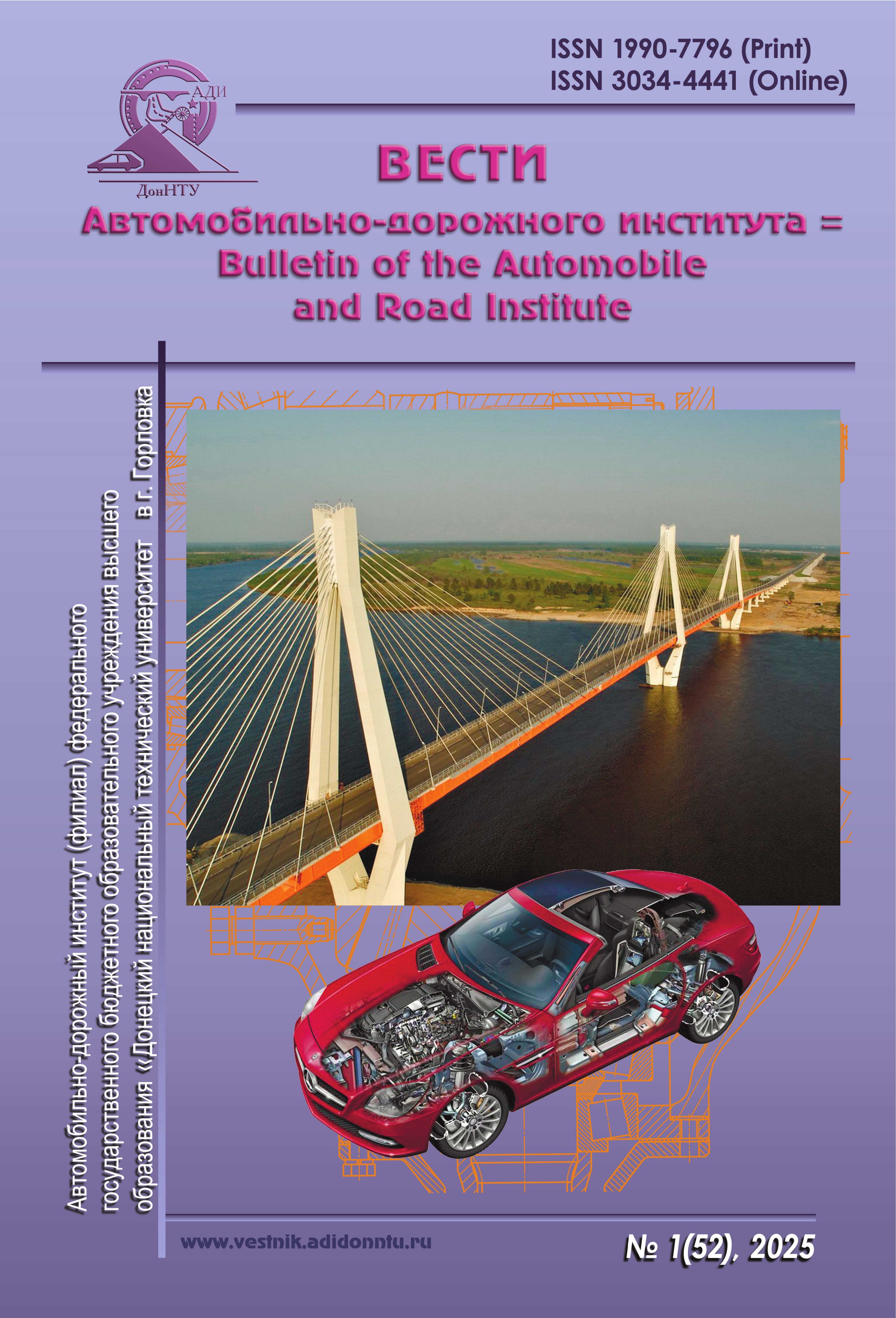Choosing a Rational Type of Rolling Stock to Operate on Public City Bus Routes
Keywords:
BUS SELECTION, ROLLING STOCK, BUS ROUTE, PASSENGER FLOW CAPACITY, DISTRIBUTION COEFFICIENT, TRAVEL TIMEAbstract
Passenger transport is one of the key systems that ensures the life of the city, since its work has a direct impact on both economic activity and the comfort level of residents. Most residents, regardless of their social status and position, choose public transport to move around the city. The role of the public passenger transport in the life of almost any country is extremely large. The main goal of the public transport in the city is to provide residents with the opportunity to get to important city objects. As cities grow and distances increase beyond convenient walking distances from the city centre, the availability of public transport becomes increasingly important. Typically, walking distance is limited to half an hour's walk, which corresponds to a maximum distance of two kilometers. The development of modern cities is directly accompanied by an increase in their territory, the removal of residential areas from places of employment and, of course, the migration of the population to new residential outskirts. The consequence of all this is an increase in the distance and time spent on the journey of passengers from their place of residence to work, an increase in the population that uses public transport, and an increase in the average number of trips per capita per year. One way to solve this problem is to consider the issue of choosing a rational type of rolling stock for work on city bus routes.
For this purpose, it is proposed to choose the type and quantity of rolling stock for operation on city bus routes depending on the time of day. During peak hours, a bus with a higher capacity based on maximum passenger flow is selected (type I bus), and during off-peak hours, a bus with a lower capacity based on average hourly passenger flow on the route (type II bus). With this approach to choosing a rational type of rolling stock for operation on a city bus route, its quantity is proposed to be determined using the bus type distribution coefficient КТр. When determining the number of type I buses, it is proposed to take the value КТр = 0,6, and for type II buses – КТр = 0,4. The proposed approach to choosing a rational type and number of rolling stock is advisable to use on city bus routes with high passenger traffic capacity.
The proposed approach to choosing a rational type of the rolling stock for operation on city bus routes will help minimize the time spent by passengers on travel and improve the quality of transport services for the city’s population.
References
Оптимизация сетей общественного транспорта городов / С. Н. Ткаченко, А. В. Паршков, А. А. Кураксин [и др.]. – Текст : электронный // Транспорт Российской Федерации. – 2017. – № 2(69). – С. 59–62. – URL: https://cyberleninka.ru/article/n/optimizatsiya-setey-obschestvennogo-transporta-gorodov/viewer (дата обращения: 02.04.2025).
Мочалин, С. М. Перспективы развития методов оптимизации маршрутных сетей городского пассажирского транспорта / С. М. Мочалин, Ю. А. Колебер. – Текст : электронный // Вестник СибАДИ. – 2019. – Т. 16, № 3(67). – С. 242–255. – URL: https://vestnik.sibadi.org/jour/article/view/879 (дата обращения: 03.04.2025).
Власов, А. А. Управление насыщенными транспортными потоками в городах : монография / А. А. Власов, Н. А. Орлов. – Пенза : ПГУАС, 2014. – 188 с. – ISBN 978-5-9282-1133-2.
Исследование пассажиропотоков и транспортной подвижности населения в городе Орле / А. Н. Новиков, С. Ю. Радченко, А. Л. Севостьянов [и др.] // Мир транспорта и технологических машин. – 2011. – № 4(35). – С. 69–77.
Кошимова, М. А. Роль и значение городского пассажирского транспорта в экономике региона / М. А. Кошимова. – Текст : электронный // Вестник КазНУ. Серия экономическая. – 2014. – № 2(102). – URL: https://articlekz.com/article/8795 (дата обращения: 04.04.2025).
Пазылидинов, И. А. Исследование и оптимизация городских автобусных перевозок на примере пассажирского автотранспортного предприятия АП-3 г. Екатерингбурга : выпускная квалификационная работа магистра ; пояснительная записка № 230403C2400600 ПЗ / И. А. Пазылидинов. – Текст : электронный. – Екатеринбург : Уральский федеральный университет имени первого Президента России Б. Н. Ельцина ; Институт новых материалов и технологий, 2018. – 134 с. – URL: https://elar.urfu.ru/bitstream/10995/60143/1/m_th_i.a.pazylidinov_2018.pdf (дата обращения: 07.04.2025).
Применение интеллектуальных транспортных систем (ИТС) для повышения эффективности функционирования городского общественного транспорта / А. Н. Новиков, А. Л. Севостьянов, А. А. Катунин, А. В. Кулев // Мир транспорта и технологических машин. – 2013. – № 1(40). – С. 85–90.
Никаноров, Р. О. Методы повышения рентабельности услуг на предприятиях автомобильного транспорта / Р. О. Никаноров, Л. А. Иванченко // Актуальные проблемы авиации и космонавтики. – 2015. – Т. 2, № 11. – С. 587–589.
Остапчук, В. Н. К вопросу о снижении убыточности пассажирских перевозок / В. Н. Остапчук // Бюллетень научных работ Брянского филиала МИИТ. – 2014. – № 1(5). – С. 38–40.
Селезнева, Н. А. Затраты времени на передвижение городскими автобусными маршрутами / Н. А. Селезнева, Е. С. Еремчук // Вести Автомобильно-дорожного института = Bulletin of the Automobile and Highway Institute. – 2023. – № 3(46). – С. 7–16.
Селезнева, Н. А. Эффективное управление пассажирскими перевозками на городских автобусных маршрутах / Н. А. Селезнева, В. А. Тятых. – Текст : электронный // Актуальные вопросы экономики и управления: теоретические и прикладные аспекты : материалы Пятой международной научно-практической конференции, Горловка, 20 марта 2020 г. В 3-х ч. Ч. 2. – Горловка : АДИ ДОННТУ, 2020. – С. 207–213. – EDN XIMWWN. – URL: https://elibrary.ru/item.asp?id=42877497 (дата обращения: 08.04.2025).


